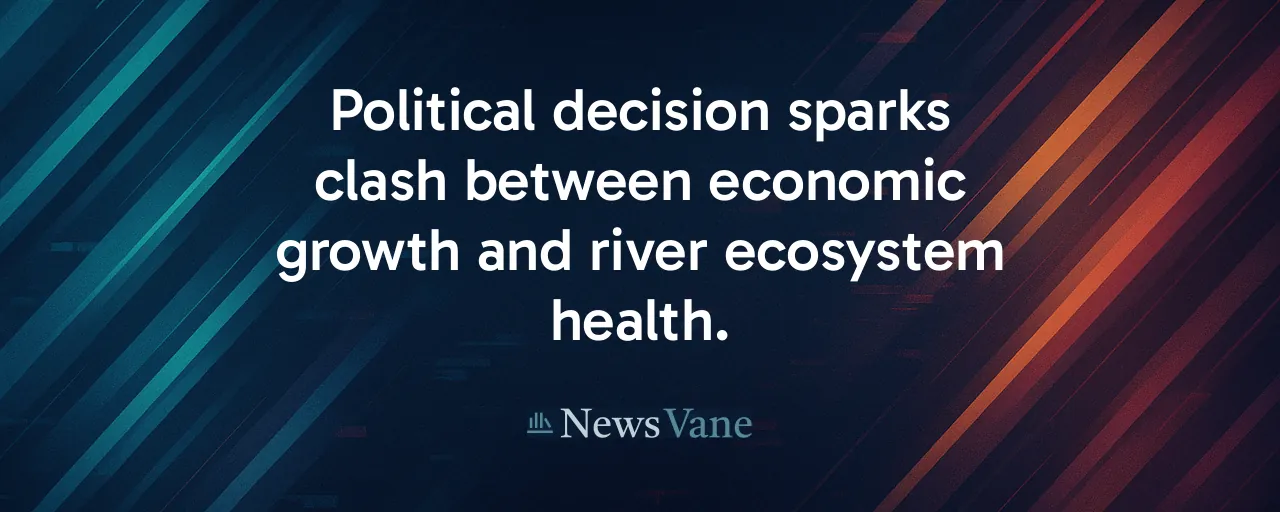A River's Fate in Flux
On June 12, 2025, President Donald Trump issued a directive that altered the trajectory of the Columbia River Basin's future. The memorandum canceled federal backing for a 2023 agreement designed to revive struggling salmon populations, a pact that had brought together Native tribes, two states, and conservation advocates. In its place, the administration doubled down on preserving hydroelectric dams vital for energy, irrigation, and shipping. The decision has stirred fierce debate, spotlighting the tension between economic priorities and the survival of a region's iconic fish.
Spanning a vast area, the Columbia River Basin powers millions of homes and feeds a robust agricultural economy. Its dams deliver reliable electricity, water vast farmlands, and support barge transport. Yet, these structures have driven salmon and steelhead to the brink, with populations now a fraction of their historical abundance. The 2023 Resilient Columbia Basin Agreement sought to address this decline through habitat funding and studies on dam breaching. By withdrawing from that deal, Trump's directive prioritizes infrastructure over ecological restoration, setting off a clash of values.
This shift aligns with a broader push to bolster energy production and economic growth. Early 2025 saw the White House declare a National Energy Emergency, ease fossil fuel restrictions, and scale back environmental regulations. For Pacific Northwest communities, the stakes are immediate: stable power and thriving farms versus the risk of losing salmon that anchor tribal cultures and river ecosystems. The memorandum has drawn both praise and criticism, laying bare a divide over how to steward the region's resources.
Why Dams Matter to the Economy
Those backing the directive argue it protects a lifeline for the Pacific Northwest. The four Lower Snake River dams generate 3,000 megawatts of electricity, enough for 2.5 million homes, offering a steady, carbon-free energy source amid growing demand. Removing these dams could destabilize the grid and raise power costs, especially as data centers and electrification strain capacity. Farmers, particularly in eastern Washington and Idaho, rely on the dams' irrigation to cultivate crops, a vital sector. The decision ensures their water supply remains secure.
The dams also enable barge transport, moving vast amounts of grain and other goods to market. Shifting to trucks or rail would inflate costs and emissions, industry leaders contend. Congressional Republicans and utility operators applaud the memorandum for safeguarding jobs and affordability. They highlight the steep price tag of dam breaching, potentially billions for new energy and transport systems, and question whether salmon recovery justifies the expense, given uncertainties about outcomes.
The Fight for Salmon and Rivers
Native tribes, environmental advocates, and Pacific Northwest Democrats view the directive as a setback for science and justice. Columbia Basin tribes, bound by historic treaties guaranteeing fishing rights, see salmon as inseparable from their culture and economy. With runs now critically endangered, biologists stress that bold steps like dam breaching are essential to avoid extinction. The 2023 agreement had promised funds for fish passage and clean-energy alternatives, offering hope for balanced progress. Its reversal, tribes argue, dismisses their rights and the river's health.
Conservationists point to the dams' wider ecological harm. By blocking natural flows and warming waters, they disrupt ecosystems that support diverse species. The 2024 Klamath River dam removals, which restored 400 miles of salmon habitat, demonstrate restoration's potential. Fishing communities are rebounding, and tourism is growing. Studies suggest Columbia Basin restoration could generate $3 to $7 in benefits per dollar invested, via recreation, flood protection, and jobs. Critics of the memorandum warn that prioritizing dams over rivers sacrifices long-term resilience for short-term gains.
A Cycle of Policy Swings
The Columbia River dispute reflects a broader pattern in U.S. environmental policy, where partisan divides drive sharp reversals. The Biden administration used executive actions to advance climate and conservation goals, from rejoining the Paris Agreement to boosting clean-energy funding. Trump's 2025 agenda counters with deregulation and a focus on energy production, including the Columbia memorandum. This pendulum swing, tied to electoral changes, disrupts long-term planning and leaves stakeholders navigating uncertainty.
Decades ago, environmental policy bridged party lines. In the 1970s, Republican President Richard Nixon signed the Clean Air Act, and bipartisan coalitions built enduring laws. Today, congressional stalemate pushes presidents to rely on temporary orders, which successors often undo. As tribes and conservation groups prepare to challenge the memorandum in court, the Columbia Basin's future remains unsettled, shaped by legal battles and the prospect of another policy shift with the next administration.
Charting a Path Forward
The Columbia River Basin embodies a complex challenge. Its dams fuel economies, powering homes and irrigating fields, while their ecological toll threatens species and cultures integral to the region. Trump's directive bets on the dams' economic contributions, but tribes, scientists, and restoration advocates argue that healthy rivers can deliver prosperity too. The debate hinges on whether both goals, energy security and ecological health, can coexist.
Finding answers means tackling tough questions. Could advanced fish passage or grid-scale storage reconcile salmon recovery with hydropower? Might federal investments ease the transition to new transport or energy systems? Polarization complicates these discussions, yet collaboration is essential. For now, the region faces renewed litigation and uncertainty, with the river's fate tied to competing visions of progress.
At its core, the Columbia Basin's story asks how to value resources in ways that sustain both people and nature. Lasting solutions will require listening to farmers, tribes, utilities, and scientists alike, forging paths that endure beyond political cycles. The work of balancing these needs is daunting but vital, for the river and the communities it shapes.
